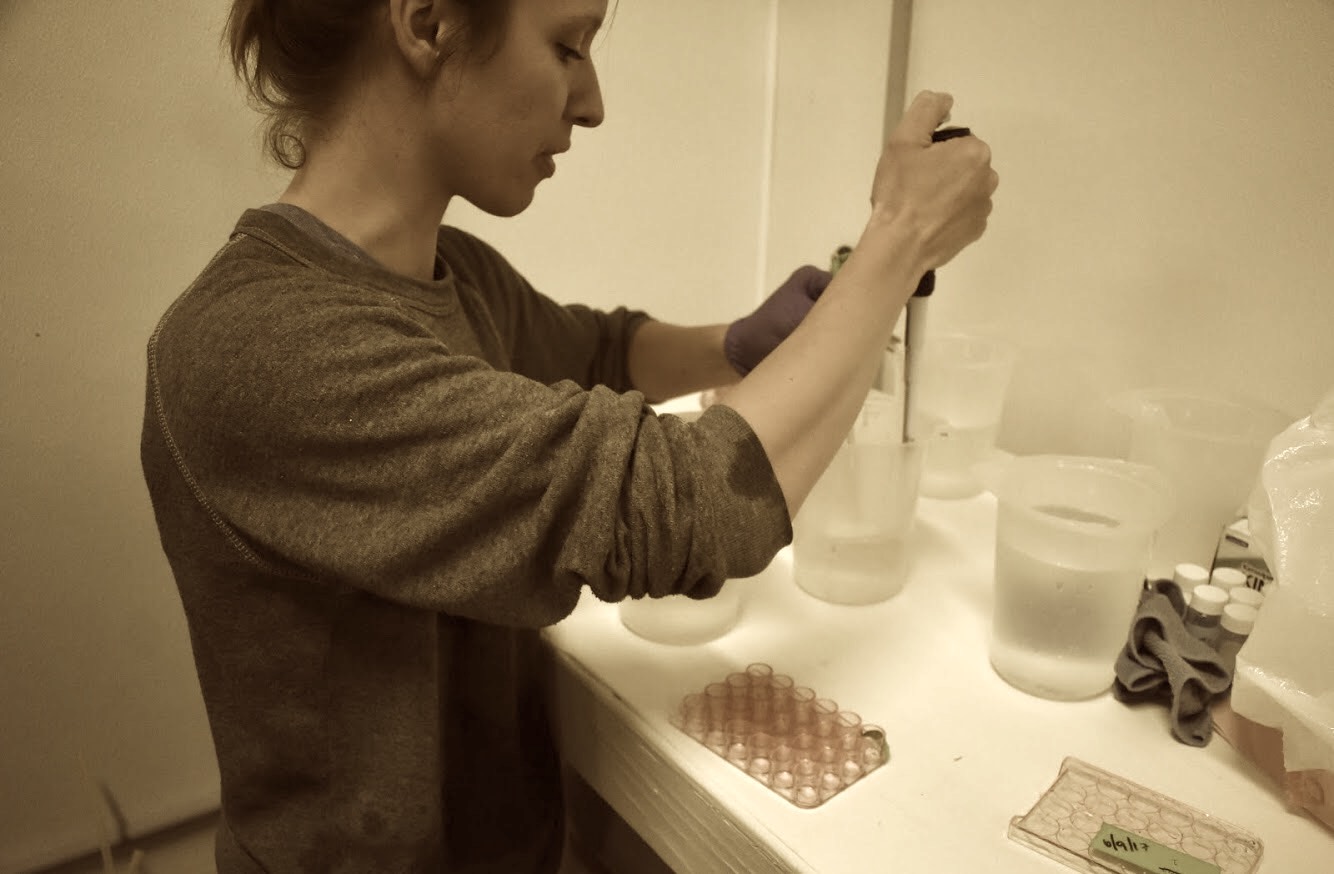Spring Hatchlings
Larvae!
The K-10 low pH and K-10 amb pH populations spit out larvae today. Here’s how I know - you can see the larvae collecting against the banjo @ water level in this K-10-amb pH group:
And in the water by shining a flashlight against the bucket:
And in the K-10-low pH group:
I collected the larvae using a 100um screen, with a 200um screen on top to filter out some of the debris. I then poured into a tri-pour, filling to 300 mL:
Using a plunger to thoroughly mix the larvae in the 300 mL, I pulled 3 x 500uL count samples into a well plate, and after checking out the larvae under the scope for a minute…
I added 1 drop of Lugols to each for counting purposes (this kills the larvae, and makes counting very easy):
It’s been 9 days since I moved the broodstock into their own buckets. Therefore, I cannot assume that these larvae’s genitors are from their own group. While I will not rear these larvae through settlement, I want to count the to see how many eggs (which are definitely from this population) were produced. I’ll post counts on my notebook, and will also update this Larval Collection Spreadsheet
Larval counts: Sampled 500 uL three times, total volume sampled from is 300 mL
- K-10-Amb pH: 80, 77, 80 = ave 79 larvae / 0.5 mL = 158 larvae / mL * 300 mL = 47,400 larvae
- K-10-low pH: 52, 57, 77 = ave 62 larvae / 0.5 mL = 124 larva / mL * 300 = mL = 37,200 Larvae
Also, to test my rearing buckets, I’ll keep these larvae around for a bit:
Other things that happened today:
- Installed in-line cartridge filters (20um, 5um, 1um)
- PSRF moved from Reeds Shellfish Diet to a live algae cocktail yesterday (5/10); things look WAY cleaner today on the live algae diet
- Set up several larval rearing buckets, and compiled a list of things I need to purchase to make 24 complete setups.
- Installed immersion heater in header tank, and set temperature to 18degC. The temperatures in all tanks had increased to ~19.5degC over the past couple days, so to test the heater’s abilities I opened several valves full-blast and added only ambient (~11degc) water. After I had brought the temp down to ~16.5degC, I set the mixing valve temp to 14degC. Here’s how things look after a few hours:

Look at all the fecal deposits that the broodstock have produced in only 2 days!:
